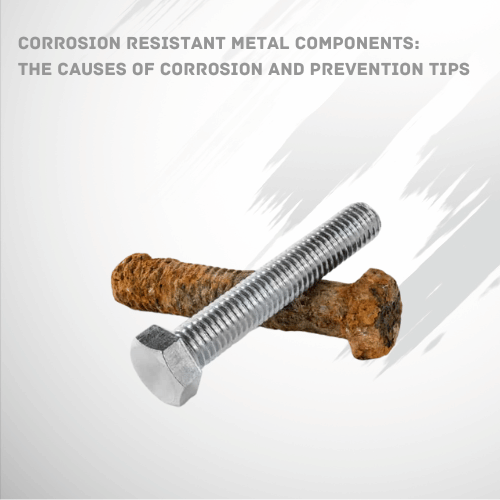
Introduction:
Corrosion is a persistent challenge faced by various industries that rely on metal components. It can lead to significant financial losses, compromised safety, and reduced efficiency. However, by understanding the causes of corrosion and implementing effective prevention strategies, it is possible to mitigate its impact and enhance the durability and performance of metal components. In this blog post, we will delve into the causes of corrosion and provide useful prevention tips to help you combat this detrimental process.
Understanding Corrosion:
Corrosion is the gradual deterioration of metals caused by chemical or electro chemical reactions with the surrounding environment. The process typically involves the formation of metal oxides or other compounds, resulting in the weakening of the material’s structure and properties. Several factors contribute to the corrosion of metal components, including:
- Moisture and Humidity: Water is a common catalyst for corrosion, as it facilitates the movement of ions and electrons between the metal surface and the environment. High humidity levels or exposure to moisture can accelerate corrosion rates.
- Chemical Exposure: Metal components can corrode when exposed to certain chemicals, such as acids, salts, alkalis, or industrial pollutants. These substances can react with the metal surface, leading to corrosion.
- Oxygen: Oxygen in the atmosphere can initiate corrosion by reacting with the metal, forming metal oxides or hydroxides. This type of corrosion, known as oxidation, is especially prevalent in ferrous metals, such as iron and steel.
- Temperature and Heat: Elevated temperatures can accelerate corrosion rates by increasing the speed of chemical reactions. High-temperature environments, particularly in combination with moisture or chemicals, can be particularly corrosive
Prevention Tips for Corrosion:
- Protective Coatings: Applying protective coatings to metal components is an effective strategy to prevent corrosion. Coatings such as paint, enamel, powder coatings, or electroplating act as a barrier between the metal and the corrosive environment, providing an extra layer of protection.
- Galvanization: Galvanization involves coating the metal surface with a layer of zinc. This sacrificial coating corrodes instead of the underlying metal, providing protection against corrosion. Galvanization is commonly used for steel structures, pipelines, and various outdoor applications.
- Proper Material Selection: Choosing corrosion-resistant metals or alloys for specific applications can significantly reduce the risk of corrosion. Stainless steel, aluminum, brass, and certain alloys are known for their high resistance to corrosion, making them suitable for various industries.
- Regular Maintenance and Inspection: Regular inspection and maintenance of metal components are crucial for identifying and addressing early signs of corrosion. Promptly repairing damaged coatings, removing rust or corrosion products, and applying protective treatments can help prolong the lifespan of the components.
- Environmental Control: Managing the environment surrounding metal components can play a vital role in corrosion prevention. Controlling humidity, temperature, and exposure to chemicals can significantly reduce the likelihood of corrosion. Implementing proper ventilation, insulation, and moisture control measures can be beneficial.
- Cathodic Protection: Cathodic protection is an electrochemical technique used to prevent corrosion on metal structures. It involves connecting the metal component to a sacrificial anode or applying an impressed current to shift the electrochemical reaction towards protection rather than corrosion.
Conclusion
Corrosion poses a significant threat to metal components in various industries. However, by understanding the causes of corrosion and implementing appropriate prevention strategies, it is possible to mitigate its impact. By following the prevention tips outlined in this blog post, including the use of protective coatings, proper material selection, regular maintenance, and environmental control, you can enhance the corrosion resistance of metal components and ensure their durability and performance over time.



